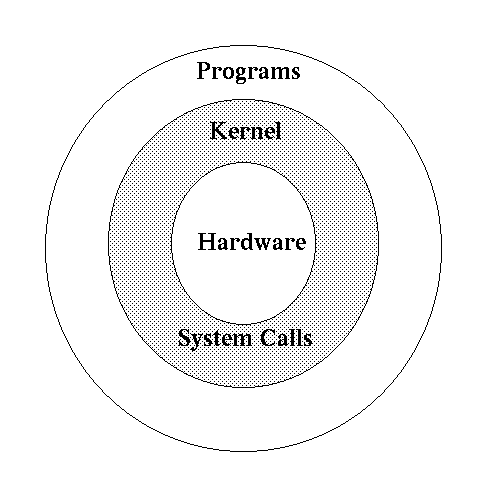
CHAPTER 2 Unix Structure
User programs interact with the kernel through a set of standard system calls. These system calls request services to be provided by the kernel. Such services would include accessing a file: open close, read, write, link, or execute a file; starting or updating accounting records; changing ownership of a file or directory; changing to a new directory; creating, suspending, or killing a process; enabling access to hardware devices; and setting limits on system resources.
Unix is a multi-user, multi-tasking operating system. You can have many users logged into a system simultaneously, each running many programs. It's the kernel's job to keep each process and user separate and to regulate access to system hardware, including cpu, memory, disk and other I/O devices.
FIGURE 2.1 Unix System Structure 